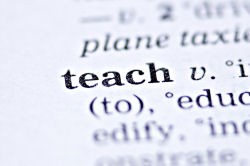You’re probably thinking how monotonous it is that I continue to repeat this, but maths is everywhere! Again.
I will never lose the amazement or curiosity I have filled with, at the fact that maths is the fundamental principle behind the creation and design of many things – and, much to your shock, as you are about to discover, it’s even on your face! Keep updated on my blog and have a look at my next blog post if you want to know what I mean by this. But really, your face is maths in practice.
In my last maths blog post: There’s no avoiding it – Maths is everywhere! (you can find this at: https://blogs.glowscotland.org.uk/glowblogs/teachingjourney/2015/11/17/theres-no-avoi…-is-everywhere/)… I quite clearly conveyed my astonishment as I was discovering the honest truth that maths is everywhere. So, now it is my turn to shock you. Here are just a few places you’ll find maths…
Have a look at the tiles, perhaps in your kitchen or bathroom. This can be on the walls or the floor – if it’s the flooring, it may be wooden.
Like pineapples? If you do, you’re one step further. If you don’t like pineapples, look at a bar of chocolate.
If there happens to be a football kicking around – pardon the unintended pun – then you’ll find maths on that.
So that takes you outside – where you will see maths everywhere, but have a look specifically at cobbles, slabs or bricks on the pavements or roads – it’ll be there.
And you’ve got your answer…
Tessellation is a mathematical concept which the construction of a multiple number of identical copies of one shape. I exaggerate ‘identical’, as this is the reason tessellation occurs. For a shape to become a tessellation, they must be the same size and shape, to fit more than one copy together.
Oxford University Press (2015) defines ‘tessellation’ as:
“An arrangement of shapes closely fitted together, especially of polygons in a repeated pattern without gaps or overlapping.”
To demonstrate this and lay it out, I have drawn a picture showing tessellation:
In this picture, you can see the triangular shapes drawn are clearly equal in size and they touch with no gaps between each shape. I could have continued drawing triangles until the page was full, but I wanted to write about it instead! Tessellations also work with hexagons, squares and many more. Any comments with how many shapes you can think of which can tessellate, would be great!
To further explain how tessellations work, below is what a tessellation is not:
In the above drawing are four circles, equal in shape in size. So, they are equal in shape and size – shouldn’t they tessellate when they are drawn next to one another? Well, no – looking back at the first picture, there are no gaps between each shape. Now looking at this picture, you can see gaps between each shape = no tessellation.
These are basic examples. More abstract designs using two or more different shapes can still tessellate, because they can be in order and start to design a pattern.
The fundamental mathematics behind tessellations is the shapes, sizes, scaling and quantity. The most basic idea is shape. In order to begin to tessellate a shape, you need to know the number of sides the shape has. For example, if I, at random, chose the circle to tessellate then began drawing it, I would soon discover it does not work – this is because it has one edge which is rounded. Therefore, clarifying my point that the fundamentality behind tessellations is shape.
UPDATE
A great discovery I have made… Have a look:
Harris, A. (2000) The Mathematics of Tessellation. [Online]. Available at: http://ictedusrv.cumbria.ac.uk/maths/pgdl/unit9/Tessellation.pdf Last Accessed: Dec 5 2015.
References
Dickson, R. (2015) There’s no avoiding it – Maths is everywhere! Available at: https://blogs.glowscotland.org.uk/glowblogs/teachingjourney/2015/11/17/theres-no-avoi…-is-everywhere/
Oxford University Press (2015). Available at: http://www.oxforddictionaries.com/definition/english/tessellation?q=tessellations. Last Accessed: Dec 5 2015.




